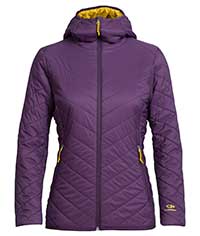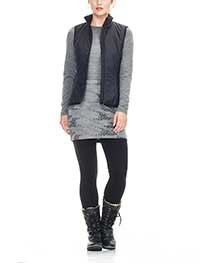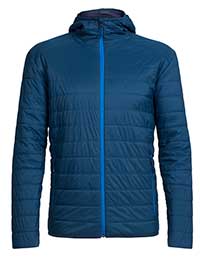Icebreaker makes clothing using mostly Merino wool and they have been at it for quite a while now. I recently had a chance to speak with Justin Walford, the vice president and general manager of Icebreaker North America. Mr. Walford shared some insights into what Icebreaker is all about and we chatted about some new clothing for this year. I couldn‘t write fast enough to get exact quotes down so let me just pass along topics from our discussion.
Icebreaker believes that nature always has a better solution and these guys look to the wool provided by Merino sheep for the mainstay of their fabrics. Other fibers are mixed in as necessary to provide durability or other desired qualities but Merino wool is the star of the show. Icebreaker sources all of their Merino wool from New Zealand because the sheep have ideal living conditions there. The New Zealand climate is ideal and the landscape provides the perfect buffet for sheep to graze.

Icebreaker was the first company to offer farmers three-year contracts and that lets the farmers invest in their businesses to produce consistent, high quality wool. The goal is to produce the same high grade Merino wool year after year, and the sheep have to be healthy and happy for that to happen. Sheep can have bad hair just like stressed, unhealthy humans, and nobody wants that. Icebreaker has been recognized by the industry for taking care of their sheep
The New Zealand Merino sheep live in temperatures that range from 95 to -4 degrees Fahrenheit and their wool keeps them warm. Merino has several other advantages – it doesn‘t stink, it feels so soft and cozy on the skin, it is really durable, and of course it is all-natural. Years ago, I started wearing Merino wool socks for these reasons. At first, I had a hard time paying the extra money, but when the socks last for years and years, the price is worth it.

Icebreaker focuses on a layering system. They offer Merino clothing for base layers like underwear and socks, mid layers, and of course outer layers. They even have developed MerinoLoft as a down substitute. MerinoLoft performs even when wet and it has all of the benefits of Merino. Up to ten percent of the Merino used in MerinoLoft is recycled unused fabric from other clothes. The product line is made for everyone, with a 50/50 split of goodies for men and women so no one is left out in the cold.
The Affinity Thermo pieces for women are new this year. These are stylish, technical midlayer clothes for winter adventures on or off the mountain. The materials used are a technical blend of soft, breathable Merino wool and polyester with the new Thermoquilt fabrication. The Affinity Thermo has a quilted pattern to trap warmth when you‘re cold, and zoned panels release heat when you are warmer. Underarm gussets give ample range of motion. Thumbhole cuffs add a cozy touch, and the snug, protective hood provides additional insulation and protection.

For men and women, the Hyperia Lite Jacket is available. These use MerinoLoft to keep you warm instead of down or synthetic insulation. The ultralight, durable Pertex® Quantum Air shell has a DWR finish to shed water. Zippered hand pockets and an internal zip pocket store small essentials. Offset shoulder seams stop chafing and the jacket stows into its internal pocket.
Icebreaker clothes are available in over 1,000 stores in the U.S. Icebreaker has 14 of their own shops called Touchlabs. New Touchlabs are opening soon so you can try on and experience Icebreaker in person.
Thanks to Justin Walford for taking the time to chat and share all things Icebreaker. I enjoyed the conversation very much and I know much more about Merino sheep now. Well, and Icebreaker too.
Mark